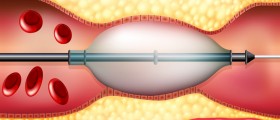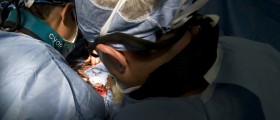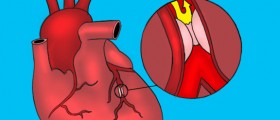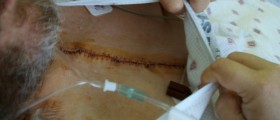A coronary stent is a specially designed spiral wire placed inside a coronary artery, a blood vessel that supplies blood to the heart.
The purpose of the stent is to keep the coronary arteries open, maintaining proper blood flow. It is used when a person has narrowed coronary arteries, usually because of advanced atherosclerotic plaque. Another procedure that is more invasive but can also be used is coronary bypass placement.
Stent Placement Procedure
Stent placement is a percutaneous procedure, meaning it is performed through the skin.
A catheter is inserted through the skin into the venous system and then guided to the relevant coronary artery. This procedure is less stressful for patients than coronary bypass placement, and the recovery period is significantly shorter.
However, some side effects can still occur. Here we discuss the most common causes of chest pain and discomfort after coronary stent placement, as that is a very frequent complaint in these patients.

Restenosis
In one third of patients undergoing coronary stent placement, the arteries begin to narrow again after several months, a phenomenon we call restenosis.
The most common symptom of restenosis is the recurrence of chest pain, usually during physical activity.
The nature of this ischemic pain is easily recognizable, and if it appears, a cardiologist should be consulted. The cardiologist will then decide whether it makes sense to insert another stent or coronary bypass surgery is necessary.
New Stenosis
The atherosclerotic process can contribute to the narrowing of other coronary arteries, which are not supported by a stent. The symptoms also include chest pain which is called angina pectoris. Refer these symptoms to your cardiologist for further investigation immediately.
Benign Pain
Scientists have found that many patients have chest pain or discomfort for months after coronary stent placement without any cardiology-related reason.
If the test results turn out normal, the cause probably lies in tissue damage caused by the procedure.
One theory is that the external layer of the blood vessels can be stretched or injured during the stenting procedure, activating nerve endings and causing pain.
This pain is not dangerous, but can be debilitating. However, no strict pathophysiological mechanisms of this type of pain have been investigated.
In Conclusion
In conclusion, it is not normal to have prolonged chest pain after coronary stent placement, so you should refer all your symptoms to your doctor. Medications can be used for pain relief, but all the important and potentially dangerous causes should first be excluded.
- Jeremias, A., Kutscher, S., Haude, M., Heinen, D., Baumgart, D., Herrmann, J., Erbel, R. (1999). Chest pain after coronary interventional procedures. Incidence and pathophysiology. Herz. 24(2):126-31.
- Photo courtesy of SteadyHealth
















